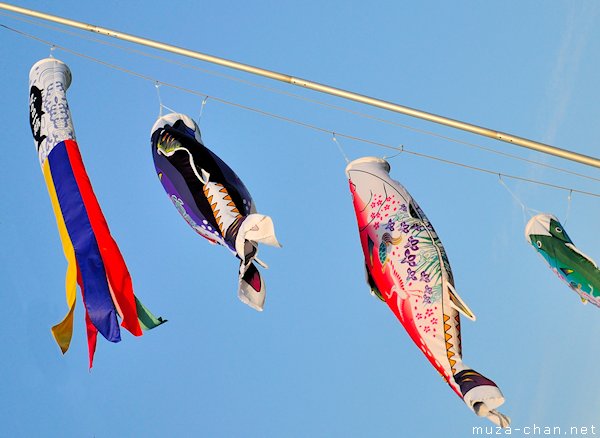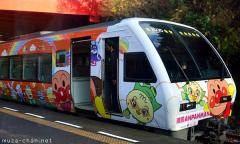Starting around mid-April, while traveling through Japan you will surely notice colorful streamers fluttering in the wind, shaped and painted to represent Japanese carps (koi). Called koinobori 鯉幟 (which literally means “carp banners") these streamers are a tradition carefully maintained since the Edo Period. To celebrate their sons, the families were raising koinobori on the Boy’s Day, a day traditionally known as Tango no Sekku that became the national holiday of Kodomo no Hi, celebrated today, on May 5.
As you know, any celebration in Japan has an interesting symbolism and the koinobori is no exception: because it swims against the current, the carp symbolizes strength and perseverance, so by raising carp banners, the parents wish for their sons to grow strong and willing to surpass any obstacle…
The color, the shape and the positions of the carps, they all have a meaning too: the largest carp, colored in black, represents the father, the second carp, colored in red, is the mother, and then there’s a different colored carp (blue, green) for each boy. Also, the first banner isn’t shaped like a carp, it represents a flying dragon, because an old legend tells the story of one carp that swam up a waterfall and became a dragon…
EXIF Info:
|
Yesterday’s Japan Photo:Anpanman train and a travel tip |



